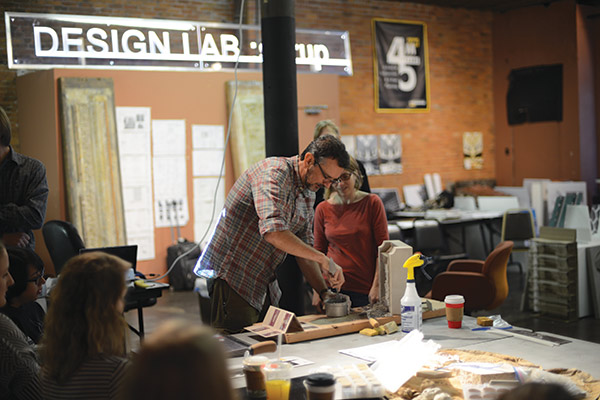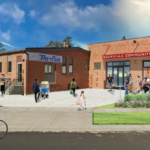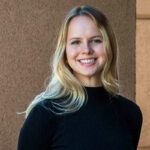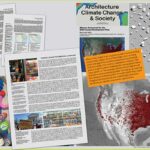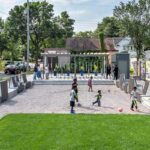Masonry Expert Simon Leverette of Henry Frerk Sons works with SARUP student Rebecca Holmquist during his workshop (Photo by Marit Gamberg)
SARUP in Chicago – Historic Preservation Studio Technology Workshop at SARUP’s Design Lab in Chicago
The inaugural Design Lab SARUP (DLS) began an outreach, innovations laboratory in downtown Chicago. The lab was created to provide a space for the advancement of architectural education for undergraduate and graduate students. The studio location in Chicago was selected to offer students hands-on experiences of important heritage and contemporary building developments. Collaboration in the laboratory was led by students in the Historic Preservation Studio and the IP_BIM Studio.
The intent of the lab was to merge the curriculum studies of the Historic Preservation program with the advanced software and technology studies of the IP_BIM studio. Anticipating the movement toward environmental sustainability and reuse of our great heritage places, the lab offered insights into a new dynamic in the professional office. Students were challenged to understand technical and intentional realities of historic fabric by using advanced laser scanning technologies, new investigative techniques and tools, sophisticated software modeling programs, and interaction with professional designers and contractors.
The laboratory began its inaugural season in fall 2015 with a four week field operation during October at the John David Mooney Foundation at 114 West Kinzie Street.
The timing of laboratory activities coincided with the citywide events of the Chicago Biennial, a unique, three- month celebration of Chicago’s great architecture focused on “The State of the Art of Architecture.” As international architects, artists, and design professionals converged on Chicago through a series of lectures, workshops, and exhibits, the DLS students were able to choose from a long list of unique design activities. The lab itself, directed by Adjunct Associate Professor Matt Jarosz in collaboration with Marit Gamberg, HPI Research Assistant and Associate Professor Gil Snyder, was the location of a series of lectures and workshops focused on heritage building technologies, including mass timber and stone, laser scanning, and design proposals for historic restorations and building additions.
